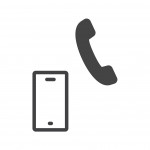What will I need for a telephone appointment?
What to expect during a telephone appointment
If you are using a computer - You do not have to download Zoom to use Zoom for your appointment.
If you are using a mobile phone or tablet – You will have to follow the Technical Support to set-up Zoom for your video appointment.
Tell your Health Professional you are interested and discuss if this is possible for you.
You can request for a change through your Health Professional or the Service Centre via email, text or phone call.
Telephone: The telephone call is a direct link to the number you have provided.
Video Appointment: Only you and your Health Professional have access to the video appointment link. No one else can access it unless you share your appointment link.
Tell your Health Professional if you can't hear them clearly. They will call again.
If you are on a video appointment, click on the link again to return to the Zoom room.
Yes, an interpreter can be booked for your telephone or video appointment.
Call the Service Centre Freephone 0800 266 513 to request for one.
Go to Telehealth contact us and help page.
Link to What is Telehealth video
 |
Mobile phone or landline |
Link to I have a Video Appointment page
Research shows that once the technical aspects of set-up are completed, telephone and video appointments tend to be similar to traditional face-to-face ones.
You do not need to look directly into the camera on your computer, tablet, or phone. Looking at the screen is enough for the health professional to know that you are listening.
Because webcams provide a limited view, your health professional may not be able to see much beyond your face. It is a good idea to tell them who is with you or if things are happening out of view (e.g. "my wife has just come into the room"), so they know what is going on.
Telephone or video appointments can sometimes suffer from technical problems, (e.g. due to a busy network or sound delays). This can result in garbled talk, or blurry or frozen faces on the screen.
Having a good connection and equipment helps, but otherwise there may not be much you can do to change this. Basically, some telephone and video appointments may turn out to be less fluent than a in-person appointment.
You may need to repeat things or ask for clarification more often. If there has been a technical glitch, a good way to restart the appointment is to repeat the last thing you heard (or said).
It may help to make a comment about technical problems if they happen (e.g. "You are breaking up a bit").
If the health professional is giving you important information, like about medications, ask them to repeat it to confirm you both have it correctly.
It is a good idea to have a pen and paper handy to note things down during your appointment.
If using video, you could also ask them to send this information via a short chat message so you have it in a written format.
As your health professional will not be able to examine you by video, sometimes you may be asked to examine yourself.
Here are some tips:
When you are asked to do an examination (e.g. check your ankles for swelling):
The final moments of a telephone or video appointment are usually different from an in-person one. In an in-person appointment, the health professional might stand up and accompany you to the door before shaking hands and saying goodbye. In a telephone or video appointment, you both need to find other ways to end your conversation. Here are some ideas:
The appointment ends when you click the Leave meeting button.
Don’t worry if you can’t find it – the health professional will close the session.
Last modified: